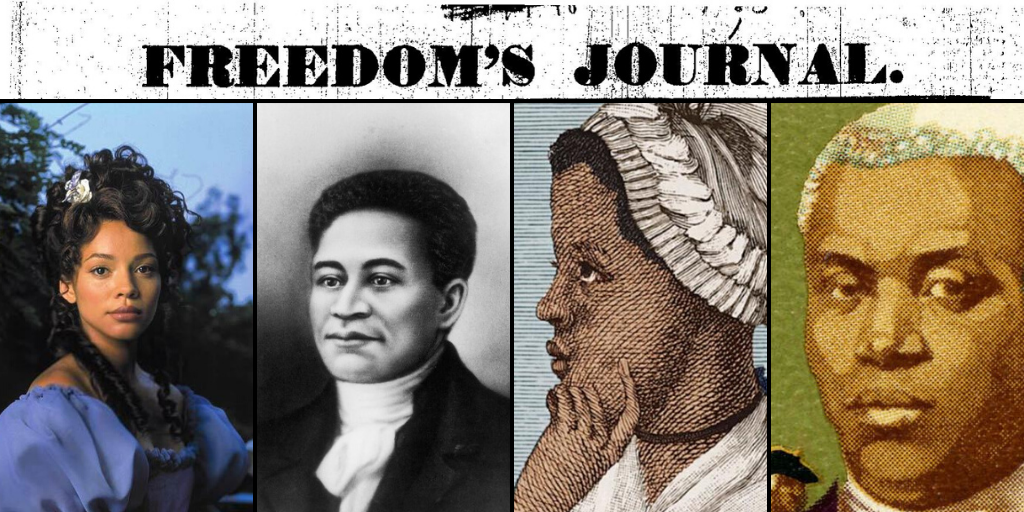I watched Hamilton on Disney+over the Fourth of July weekend, and I was let down. I didn’t like it.
Apparently, I wasn’t alone. It seems like there are a lot of other people who didn’t like it either, as evidenced by this Twitter moment full of commentary from historians on why Hamilton could be seen as historically insensitive at best.
One reason historians have come out in force urging caution against fully embracing Hamilton is because its acceptable, woke persona could make audience members feel too comfortable with the Founding Fathers and the other figures showcased in the musical. Even though we know we’re watching a story about Hamilton, George Washington, Thomas Jefferson and others, our eyes tell us we’re watching a story about Black and Brown people start a nation. While the argument can be made that it’s a reclaiming of a narrative, my big question is what kind of narrative are we reclaiming as ours? Are the stories of Hamilton, Washington, etc. stories that we, as POC, need to identify with?
I’m still wrestling with what Hamilton is trying to do. But, after talking with folks on Twitter, I came to the very true conclusion that this musical can give audience members an inroad to start investigating these figures. And indeed, there are several posts about young people being inspired by Hamilton to learn more about Black and Brown historical figures who participated in the start of our nation.
In an effort to encourage that, I’ve decided to provide my own list of figures for audience members to look into. Every figure listed below has been influenced, directly or indirectly, by Hamilton or one of the Founding Fathers, for better or (usually) worse.
Sally Hemings
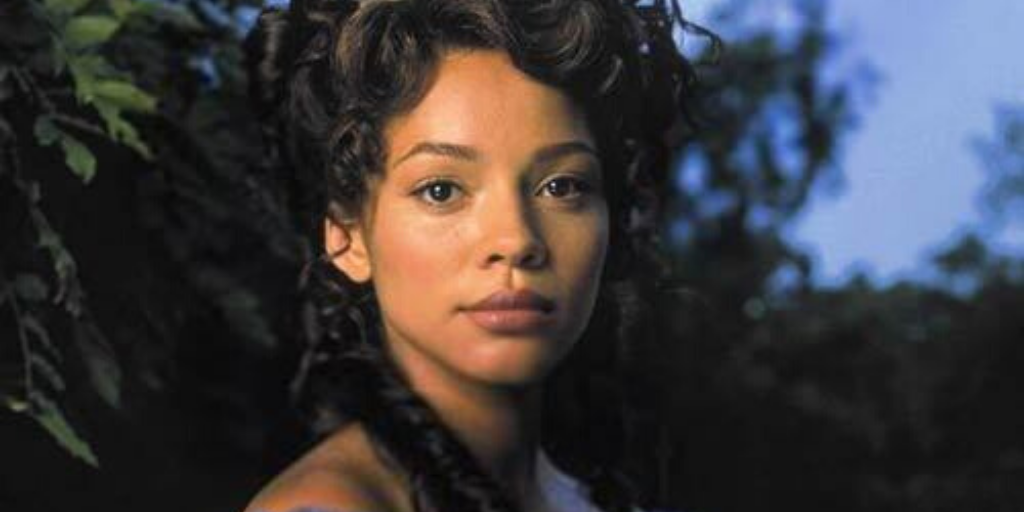
What troubled me the most about Hamilton and the potential danger of audiences taking its lighthearted storytelling as actual truth is boiled down in the “What’d I Miss” number, in which Daveed Diggs’ Thomas Jefferson asks “Sally” to be a dear and read the missive he received to head to New York. That “Sally,” of course, represents Sally Hemings, and in the musical, she’s portrayed by one of the company, a mature Black woman. However, the reality of Hemings’ life is much more heinous than simply being a supposed happy slave opening her master’s mail.
Hemings herself is a product of rape; her mother, Betty was the slave to John Wayles, a Virginian planter, and was eventually assigned by Wayles to be his “mistress,” but as we know, slaves didn’t have any rights to consent, so the term “mistress” is simply used by slaveowners to whitewash their sexual sins. Betty herself was born after what I’m sure was a suspicious “relationship” between a “captain of an English trading vessel” and “a fullblooded African” woman, as described by her descendants’ oral history.
Hemings’ life and genealogy, unfortunately, is full of tragedy, and the tragedy continues as she is forced to be Jefferson’s “mistress,” giving birth to several children, all of whom were eventually freed while she herself is only allowed freedom in the last decade of her life.
Hemings was 14 at the time she was claimed a “mistress,” with historians believing that the new designation of their relationship occurred during the time Jefferson, Hemings and his daughter Mary (who also went by the nickname Polly) spent several years in Paris, where Jefferson was an envoy. Jefferson was 44. Before any Jefferson stans try to tell me that ages of consent were different back then in an effort to excuse Jefferson’s crime, check out what Abigail Adams wrote of Sally when she and Polly stayed with them during the summer of 1787, during which Sally was between 15 and 16 years old, according to Adams’ own letter to Jefferson. It can be assumed that Sally was supposed to watch over Polly, even though they were roughly the same age. Abigail wrote:
“The Girl who is with [Polly] is quite a child, and Captain Ramsey is of opinion will be of so little Service that he had better carry her back with him. But of this you will be a judge. She [Sally] seems fond of the child and appears good naturd.”
She eventually wrote back to Jefferson again:
“The Girl [Sally] she has with her [Polly], wants more care than the child, and is wholy incapable of looking properly after her, without some superior to direct her.”
If Sally is seen by Abigail Adams as being a child, then Jefferson should have seen her that way as well, especially since, once Sally became pregnant by Jefferson at age 16, she agreed to go back with him to Monticello instead of petition for her freedom while in France (where slavery was outlawed) if he would release her children when they came of age, which is documented as being the milestone of their 21st birthday.
Instead of thinking of Hemings as merely Jefferson’s “mistress,” remember her as a casualty of the institution of slavery. She is a victim as well as a survivor, and her life should be honored.
Crispus Attucks
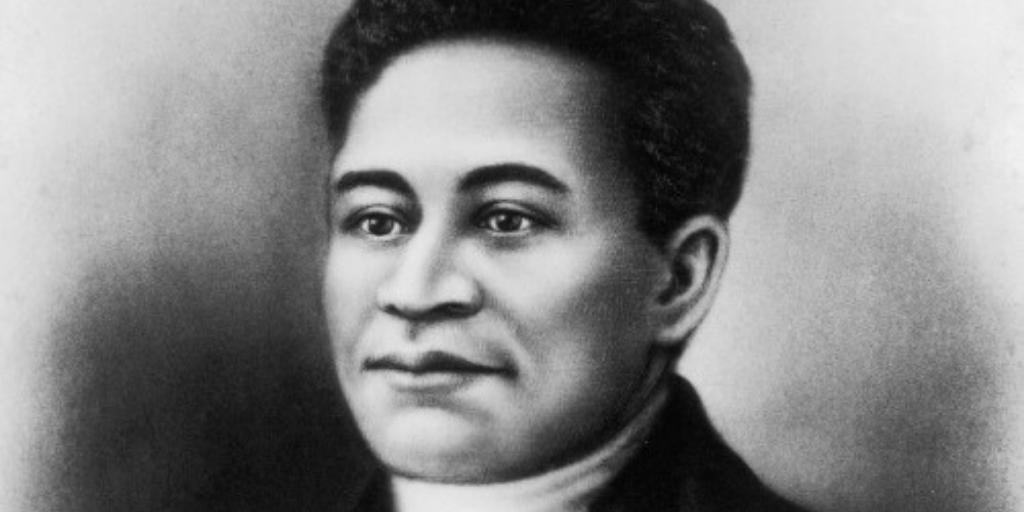
As I write in my debut book, The Book of Awesome Black Americans, Attucks was a dock worker of Native American and African descent who became the first American killed in the American Revolution. My research showed that Attucks was born a slave who eventually became a sailor and ropemaker in Boston, the state where the inciting incident of the American Revolution, the Boston Massacre, took place.
As I wrote in my book:
The incident that we became known as the “Boston Massacre” started because of a working dispute. Attucks and others were aware of British troops, who were taking local part-time jobs. The job market became competitive, and on top of that stress, Attucks and others like him could have been forced into serving the British Navy via impressment. These stresses led to a fight March 2, 1770, between Boston ropemakers and three British soldiers. That Friday night fight led to a bigger escalation that Monday night, when a soldier looking for work went to the wrong pub—a pub that included seamen, including Attucks, ready to fight. John Adams, who would eventually become America’s second President, described a group of thirty, a “motley rabble of saucy boys, negroes and molattoes, Irish teagues and outlandish jack tarrs [slang for the British Navy]” who through insults, snowballs, and sticks at the guard. Seven other Navy men arrived and opened fire, killing Attucks and four others. Attucks and the others killed were instantly hailed as martyrs and, despite Boston’s rules regarding the burial of Black people, Attucks was buried in Park Street with the others killed.
Ironically, Attucks’ murderers were acquitted for their crimes by Adams himself, who defended the soldiers in court. Adams’ defense rested on his assertion that Attucks initiated the attack by striking first: Adams describes Attucks as possessing “hardiness enough to fall in upon them, and with one hand took hold of a bayonet, and with the other knocked the man down.” The soldiers’ acquittals enraged the public, but Attucks has gone down in history as a symbol of American oppression under British rule.
Adams’ rule shows that Adams, and by extent the law as it was applied to Attucks’ case, blamed Attucks for his own death and accused him of having brute strength that justified his death. This doesn’t sound too dissimilar from what we hear today regarding the murders of Black men and women at the hands of police, in which victims are described as being scary, putting armed police “in fear of their lives,” of having immense strength. For me, I would have liked if Hamilton had made mention of Attucks, since he was at the very start of the war. Unfortunately, that moment was missed. However, you can learn about Attucks and honor his legacy as the being the catalyst for the start of the nation we know today.
Benjamin Banneker
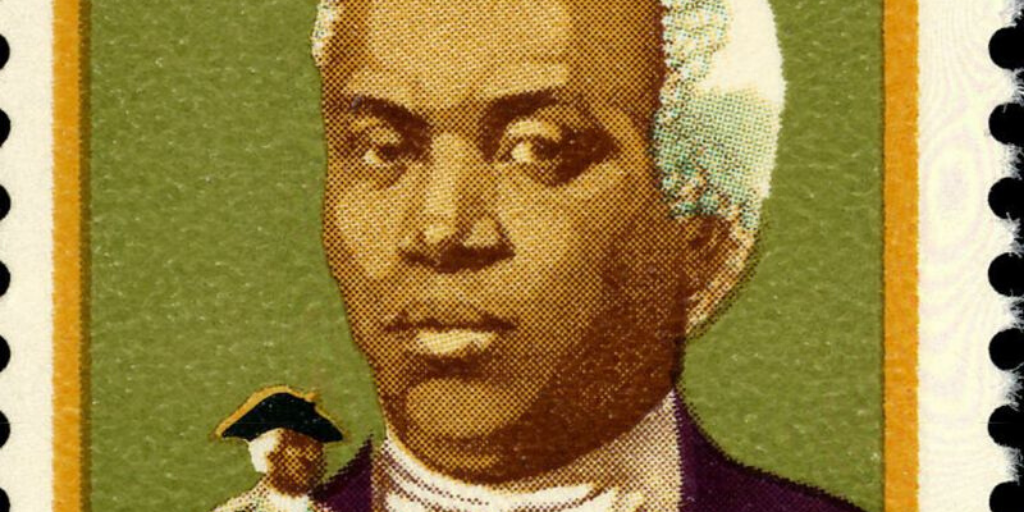
Benjamin Banneker was actually part of George Washington’s team of surveyors when he established Washington D.C. as the nation’s capital. Again, I’ll refer back to my book regarding Banneker’s life:
Banneker was born a free man in 1731 Virginia and as such, he attended Quaker schools. Thanks to the Quaker anti-racist philosophy, probably grew up in a blessed bubble of protection against the harsh, racist outside world. However, he left school after the second grade and was self-taught afterwards. But apparently, he was his best teacher, since he excelled in many areas, including engineering, astronomy, mathematics, writing and public speaking, where many of his White contemporaries probably only excelled in one.
Banneker was easily one of the smartest people in the 18th century, replicating the blueprints for Washington, D.C. from memory after the man hired for the job, a Pierre Charles L’Enfant, left his job as engineer in a huff and took the plans with him. He also built the first clock in America, which worked perfectly for forty years. Another of his accomplishments includes his annual Farmer’s Almanac, which he created after becoming interested in astronomy (and successfully predicting an eclipse from his own calculations). The almanac contains information all drawn from Banneker’s mathematic and scientific know-how, and became a top-selling book in several states including those in the original 13 colonies as well as those closer to the south like Kentucky, a tremendous feat for the first book of science, and one of the first published works, written by an African-American author.
Banneker used his fame to fight against slavery, and he sent a letter to Thomas Jefferson challenging him on why he didn’t practice what he wrote regarding human liberty in the Constitution.
Jefferson, as you might know from American history, was the main writer of the Declaration of Independence, with his most famous line from that document being that “all men are created equal.” However, Jefferson wasn’t a practitioner of what he preached, since he owned hundreds of slaves on his property, Monticello, and kept Sally Hemmings as what many would have called back then a “mistress,” although in reality she was a victim of his sexual abuse, since slaves didn’t have the right to consent. How can you change the mindset of a man whose own behavior is wildly hypocritical? It’s not known if Banneker thought his idea regarding sending his almanac was a long shot, but he sent it anyway, with the goal to impress upon Jefferson that his own words of men being created equal should stand for Black men, too. However, despite Jefferson’s words of praise, he failed to implement any action against slavery, which is why Jefferson consistently gets an L in history for being one of the country’s biggest hypocrites, a man full of flowery words but no backbone to implement them in reality.
Phillis Wheatley
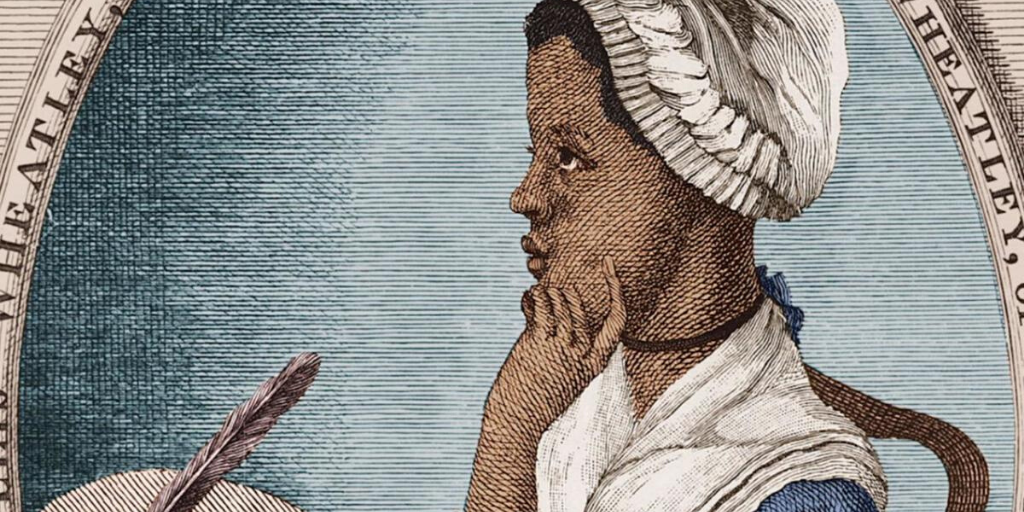
Phillis Wheatley is the first woman of African descent to be published in America. Wheatley is known for her poetry, but she is also known for her status as an icon of the early abolitionist movement. Despite being a slave, she was able to make her mark in the literary world.
In my book, I focus on how Wheatley’s poetry challenged the notion of the day that Africans were subhuman.
Her first published poem, however, is thought to be An Elegiac Poem, on the Death of that Celebrated Divine, and Eminent Servant of Jesus Christ, the Reverende and Learned George Whitefield…in 1770. Her poem made her a worldwide superstar, with abolitionists using her as an example that African slaves weren’t merely chattel—they were people with interests in the arts and creative expression. As an 18 year old, Wheatley had written 28 poems and, after American publishers refused to look at her work, the Wheatleys had her book, Poems on Various Subjects, Religious and Moral published in London in 1773, making Phillis the first Black person to have a volume of poetry published in the modern world.
Wheatley was both a supporter of America’s fight for independence as well as for the end of slavery. According to the National Women’s History Museum, she wrote to notables and ministers about the importance of ending the practice of slavery on the grounds of human liberty. “During the peak of her writing career, she wrote a well-received poem praising the appointment of George Washington as the commander of the Continental Army,” states the site. “However, she believed that slavery was the issue that prevented the colonists from achieving true heroism.”
William Hamilton
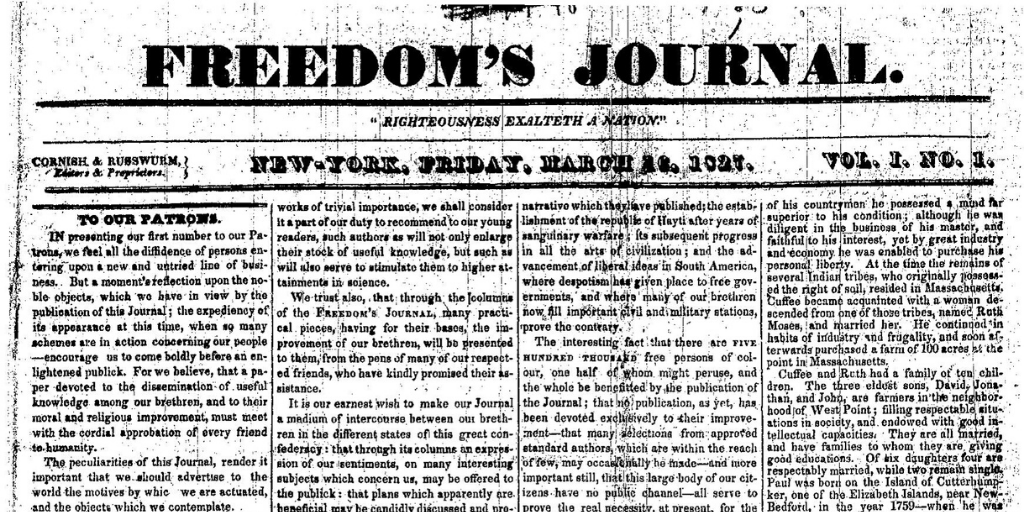
Hold on to your hats, folks, because I didn’t realize I would find this gem of a person in my research for this article. Apparently, William Hamilton, an early abolitionist, is a man of African-American background who was reported (or at least rumored) as being Hamilton’s illegitimate son.
William’s mother is said to have been a free Black woman, and if accounts are true that he’s Hamilton’s son, then I wonder why William wasn’t included in the musical. It would have been very interesting to see them tackle Hamilton’s own wishy-washy stance on slavery and African-American freedom through reckoning with his son’s existence.
Historians are now revealing how, despite Hamilton’s documented stance against slavery in his writings, treasury policy and in his co-creation of resources for freed Blacks, he was able to overlook the issue when it came to his own social climbing, such as when he married into the Schuyler family, who owned slaves and whose sales of slaves he managed. Or when he became friends with George Washington, who owned slaves at Mount Vernon. As historian Annette Gordon-Reed said to the Harvard Gazette, “[C]limbing the ladder was always at the top of Hamilton’s agenda. His relationship with Washington, his marriage into the wealthy Schuyler family, his slaveholding friends—all advanced him socially while requiring him to turn his head from the toughest issue of the day.”
Despite Hamilton’s sometimey nature regarding fighting for slavery, William, a carpenter, was a staunch abolitionist, co-founding the New York African Society for Mutual Relief in 1808, and in 1827, he helped establish America’s first Black paper, Freedom’s Journal. The editors of the paper, Samuel Cornish and John Brown Russwurm, are also figures I highlight in my book.
The New York African Society for Mutual Relief was created to help widows and orphans, families who needed help with funeral expenses, and Black businesspeople buy real estate to open their own shops, restaurants and services. William wrote extensively about the tenets of the Society in his 1809 address, which you can read in full at Black Past. While fueling the Black economy, the Society building also served as a stop on the Underground Railroad in the 1800s.
To me, Williams’ Society is a direct parallel to The New York Manumission Society, which Hamilton co-founded, as well as the African Free School, which the New York Manumission Society founded. The school, in particular, helped the children of slaves and free Blacks earn an education, giving rise to several prominent Black thinkers and leaders in the 18th and 19th centuries. While William seemed to have been even more outspoken regarding slavery, both Hamiltons’ legacies were made in part by establishing resources for Black Americans to achieve equality.
A note on Alexander Hamilton
I’ll leave this article with a note about Alexander Hamilton himself. The musical makes allusions to Hamilton’s own question marks regarding his ethnicity. Historians have been trying to find the truth behind the rumors of Hamilton’s mother being of mixed-race ancestry, despite her registering as “white” on Nevis tax rolls. I wouldn’t be surprised if his mother was actually mixed-race and Hamilton was, in fact, part of a marginalized community. He wouldn’t be the first historical figure to be rumored as such.
Let’s say Hamilton is, in fact, mixed-race. Does this change how we view Hamilton himself? Should he have been more adamant about ending slavery? Should he have called his friends out on their hypocrisy? Would the issue of slavery have mattered more to him if he knew he was, in fact, of African ancestry?
I am not sure, to be honest. That doubt goes into my lingering issues regarding Hamilton as a whole. Is it wise to hang the modern immigrant/POC narrative on Hamilton, who, despite indulging in abolition work, still catered to white society in many of his actions? Does it make sense to paint Hamilton as a person of color?
I think that parallel would have made more sense if there was, in fact, more of a focus on Black and Brown 18th century people within the musical. If there were more characters who represented marginalized people telling their stories within the musical, then perhaps there would be room to draw some conclusions as to how those people’s stories might relate directly to Hamilton and how he sees society.
But, since the musical doesn’t do this, it is incumbent upon us to fill in the gaps. Hopefully this article helps you on your journey of filling on those gaps and developing more nuanced opinions on the Founding Fathers and the people of color who influenced their lives.
